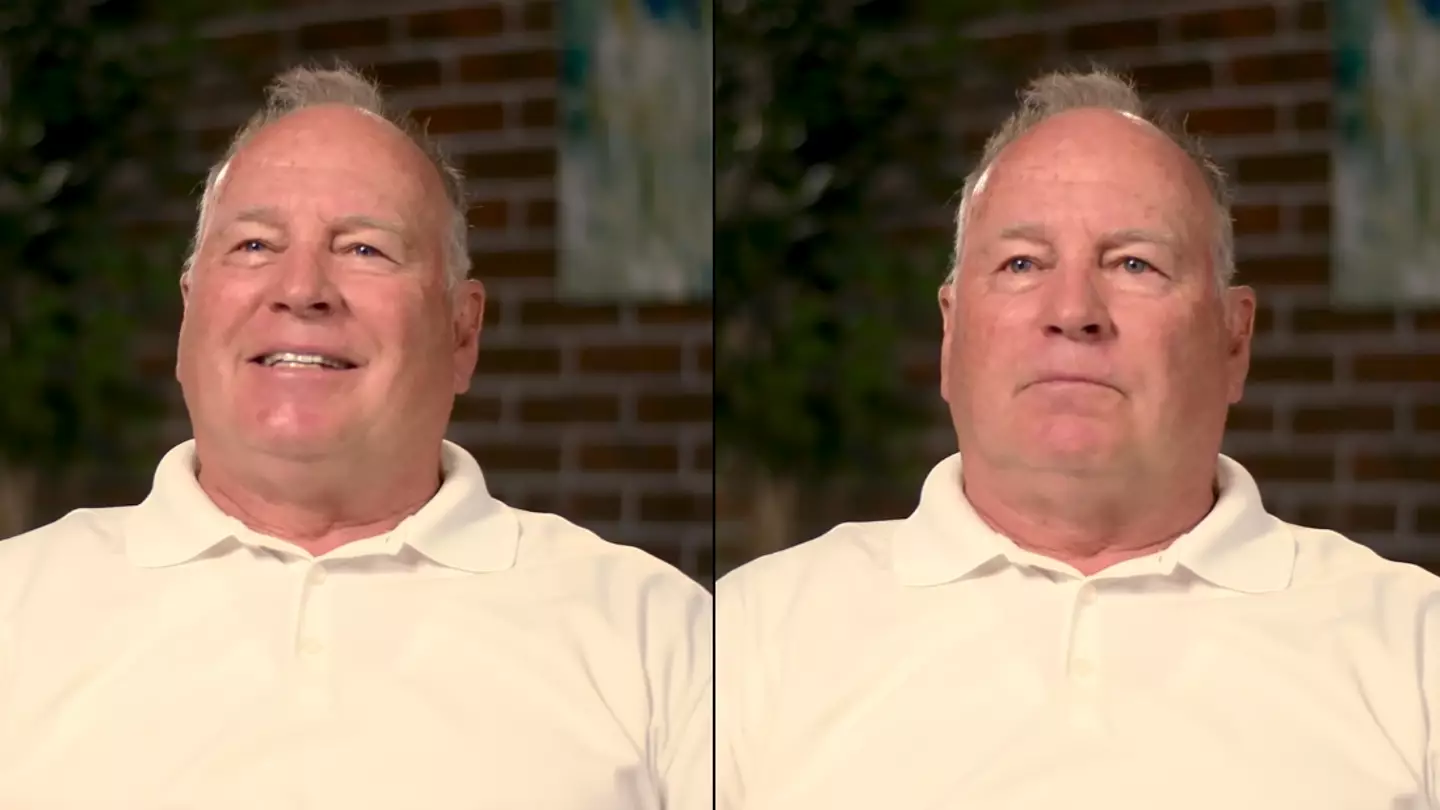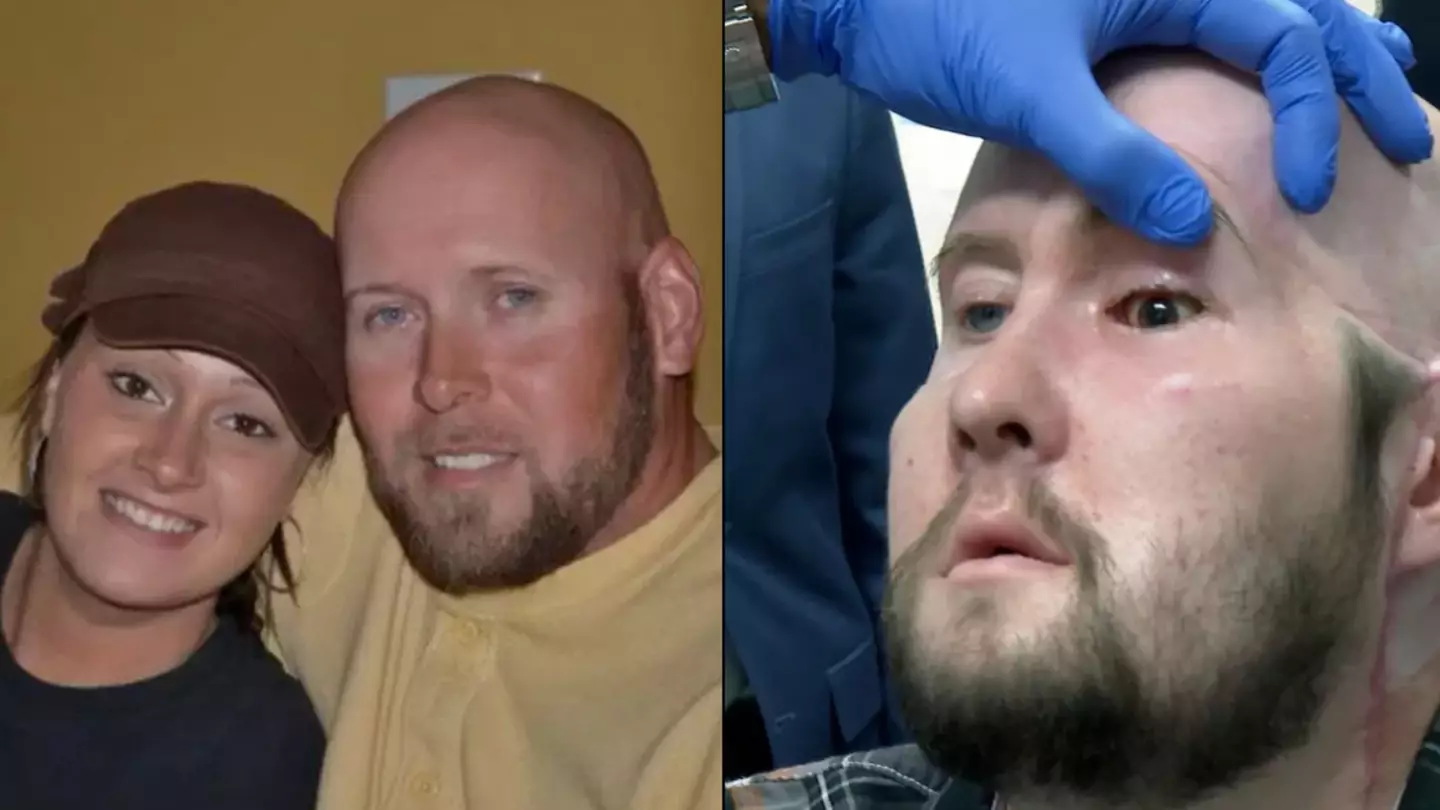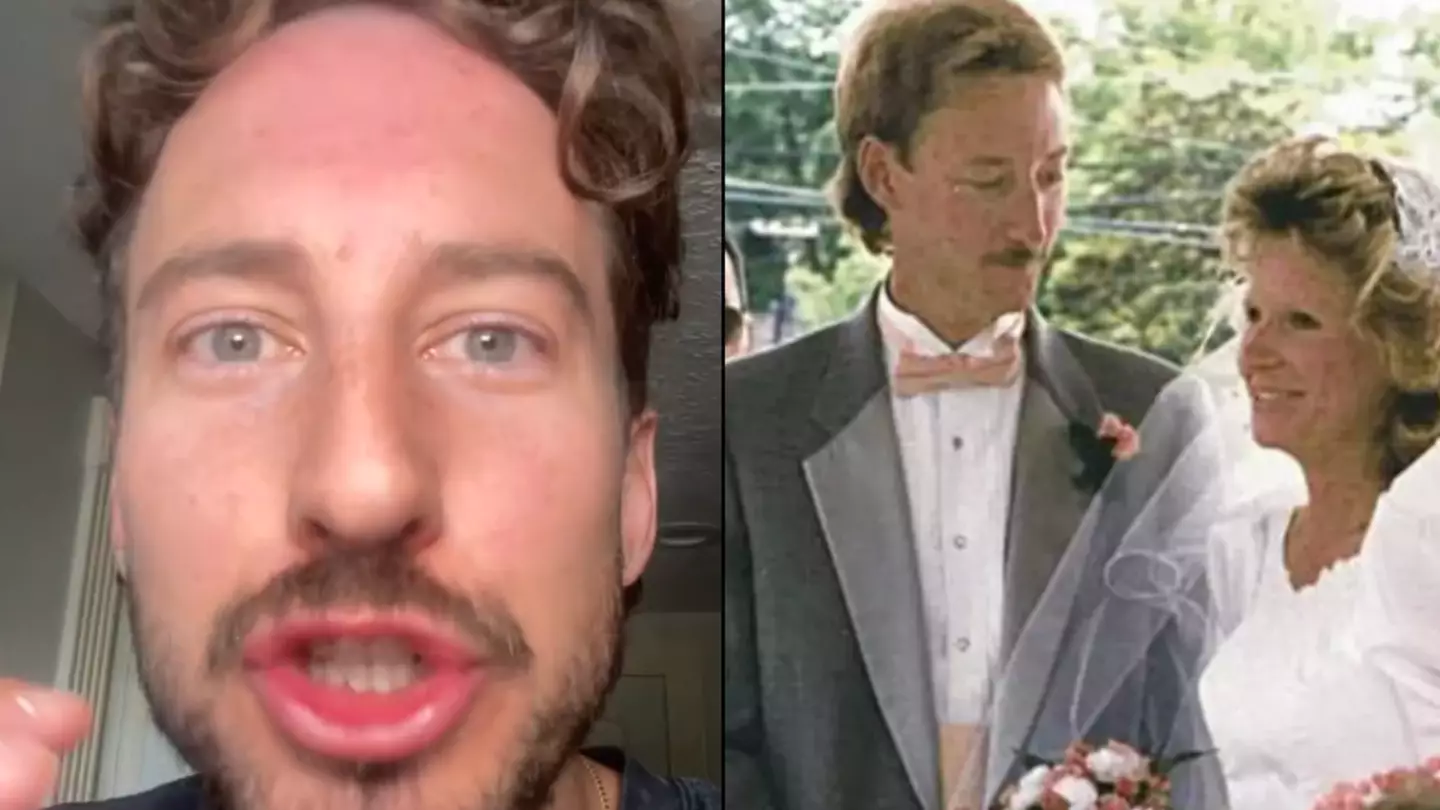
You might have heard about a man named Sonny Graham, who got a heart transplant in 1995 from Terry Cottle, a 33-year-old who sadly commited suicide.
After the transplant, Sonny went on to live a life that was strangely similar to that of his donor, with him developing a taste for Terry’s favourite food – and he even ending up marrying his wife.
Tragically, Sonny went on to also take his own life in 2008.
It’s a tad hard to explain, the idea that getting a new organ from someone might change your life significantly and have a major impact on who you are as a person.
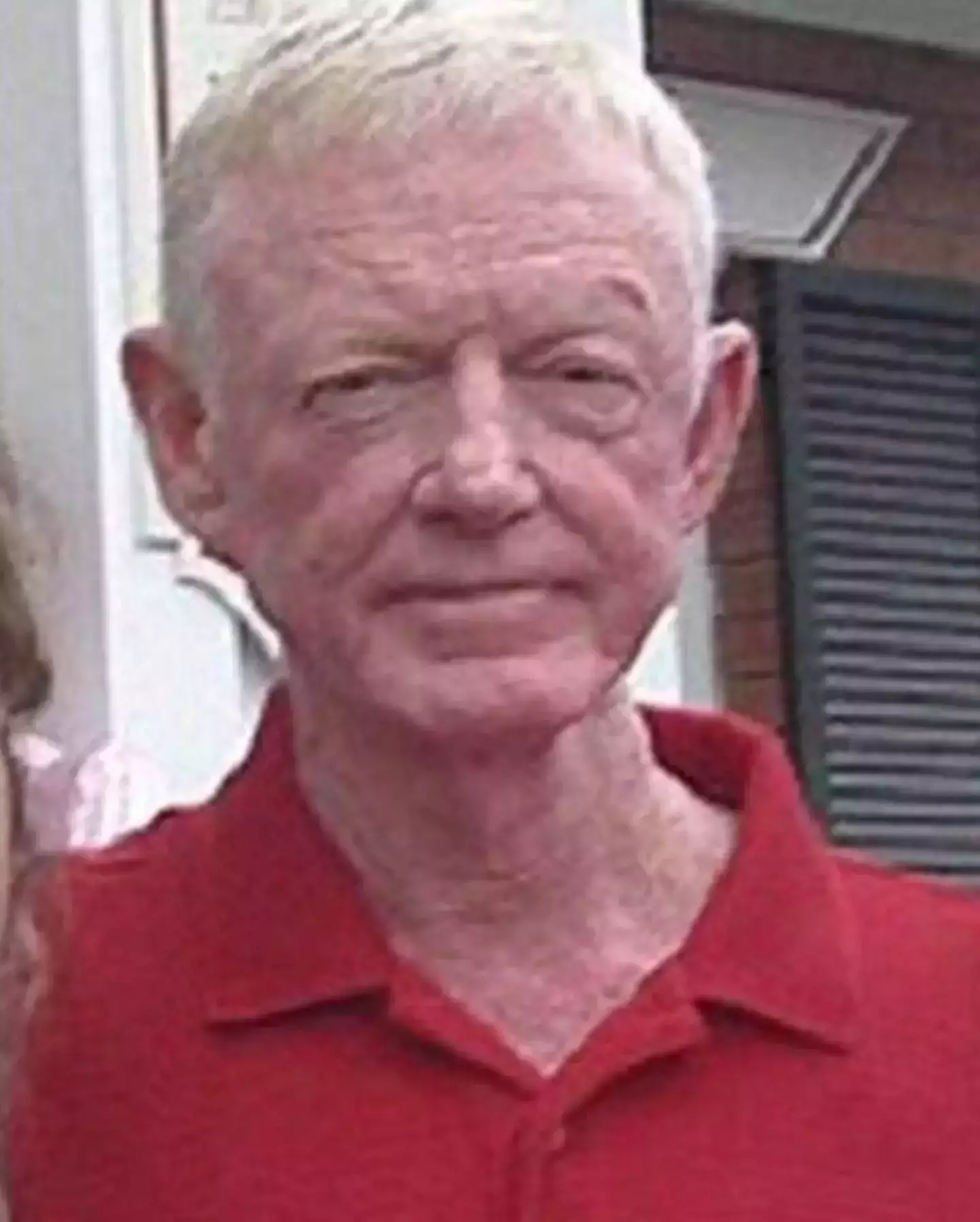
Sonny Graham ended up living his heart donor’s life (Family Handout)
A theory which tries to figure this phenomenon out is ‘Epigenetics’, where certain experiences in life could be passed on through our genes.
The idea behind Epigenetics is that there are inheritable traits that someone has picked up over a lifetime which end up being passed down by their genes.
Or perhaps passed across if some part of them has been transplanted into another person.
There are a number of stories of people getting transplants who then became more like the person who had donated an organ to them.
Gaining a part of another person had not just brought in another organ to perform a bodily function but seemingly brought part of the person who donated it with them.
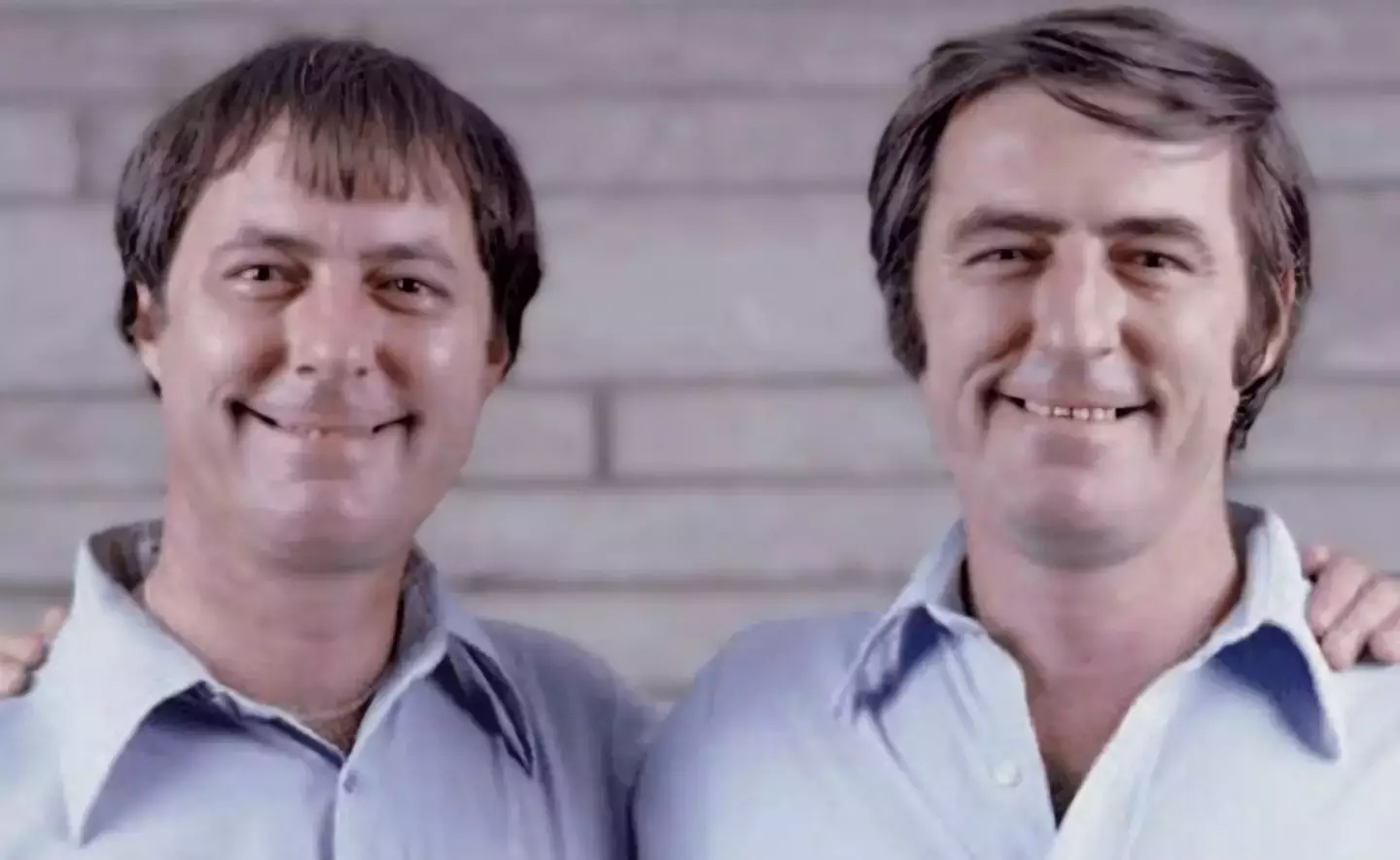
These twins separated at birth lived near identical lives without knowing it. What gives? (YouTube)
Some chap on TikTok who was trying to explain Epigenetics to his followers recounted stories of a man getting a heart transplant who seemed to pick up his donor’s love for classical music.
In another case of heart donation a woman was able to complete the lyrics to a song her donor had written, while a young girl who got the heart of another child who had been stabbed to death ended up having nightmares about it.
The BBC reports that studying the descendants of those who have been through traumatic experiences produced some strange results.
Scientific studies comparing children of veterans who had been prisoners of war to those who hadn’t found a higher rate of mortality among the former group.
It’s been theorised that living through war, famine and other traumatic experiences can have an epigenetic impact on future descendants, though proving such things for certain and how exactly they work still eludes us.
Some people who have such close biological connections can end up living strangely similar lives.
There are twins who were separated at birth but lived near identical lives and developed the same tastes in cigarettes, beer, cars, dog names and even the names of their wives and children.
Taking to TikTok, palliative care nurse Julie McFadden has walked her followers through the four stages of death, hoping to help people prepare for the loss of their loved ones as she believes that ‘education decreases fear’.
The 41-year-old, who is based in Los Angeles, has recently answered one of the most common questions she gets as someone in her line of work: what does dying actually look like?
McFadden has explained that dying is a process and consists of four phases spanning across six months.

(TikTok/Hospicenursejulie)
Slowing down
In the first phase of dying, which she describes as ‘slowing down,’ the symptoms one experiences are more generalised.
“For instance, you’re just going to be generally tired, generally lethargic, not eating and drinking as much, probably being less social,” she said.
A decline in strength
The second phase starts around three months before someone passes and includes more visible signs of debilitation and a decline in strength.
“The closer you get to death – let’s say three months out – you’re going to be more debilitated,” she explained.
“It’s going to be difficult for you to leave the house, you probably are eating and drinking very little throughout the day, and you are sleeping more than you are awake.”
The transitioning phase
The third phase is known as ‘transitioning’ and that’s when people can experience hallucinations, and it happens about a month before death.
“This is when people will start seeing dead relatives, dead loved ones, dead pets, things like that,” McFadden said.
She explained that someone ‘can be up and having a normal conversation with their family’, whilst ‘saying they’re seeing their dead father in the corner who is smiling and telling them he’s coming to get them soon and not to worry’.

Those who work in palliative care have seen a common pattern among those who are dying. (Getty Stock Photo)
Actively dying
The fourth phase is the more distinct, scariest time in the dying process.
“The actively dying phase is what scares people, because they’re not used to seeing it and they don’t know what the heck’s going on,” McFadden said.
“Your loved one will likely be fully unconscious, no food or water, possibly for days. They’ll be incontinent, so you will have to change them.”
She warned that someone dying ‘will have changes in breathing, so their breathing is going to look different’.
‘Metabolic changes’ such as a difference in skin colour, high and low temperature, and the ‘death rattle’ can also occur.
She explained of the latter: “It’s literally just a bit of saliva collecting at the back of their throat because their mouth is open, their breathing is going over their saliva and causing a gurgle.”
While these can be upsetting, McFadden insists they’re a ‘normal part of death and dying’ which ‘is not hurting your loved one’.
“It’s important to be educated about what death actually looks like,” she concluded. “Movies and television don’t do it justice, then people see it in real life when it’s their loved ones and they freak out.”
Scott Drummond was 28 when he dislocated his thumb in a skiing accident and needed to undergo a routine operation to fix the injury quickly.
However, disaster would strike moments after Drummond was put on to the operating table.
According to the man, now in his late sixties, one of the nurses in the operating room had never performed a surgical tourniquet before and was reassured by the doctor that he would talk her through it.

Unfortunately, during the routine surgery, the tourniquet valves were incorrectly opened, and Drummond lost his life for a short amount of time due to the complications.
During the incident, Drummond recalled the nurse screaming, ‘I killed him!’ as she ran from the room. The next thing he remembered was a sensation in his arm which reached up to his heart, and all of a sudden he was floating above his body looking down at the operating table.
Speaking to Prioritise Your Life, Drummond shared: “I watched every stitch that was put into my thumb.”
He also remembered feeling a presence next to him, which he believes now to have been God.
From what he can recall, Drummond recounted how the faceless being transported him to a field full of beautiful flowers.

He said during the interview: “I was told, it’s time to go.”
During the encounter with the mystery person beside him, Drummond noted that no words were exchanged verbally, but actually through the mind.
He said: “I remember so vividly, I could never look back, or I was instructed never to look back again, and the next thing I knew, and it was like a twinkling of an eye, I was standing in a field where the person who was with me was right next to me, but I couldn’t see them.”
Drummond continued: “I looked over to the left and there was some great big, tall trees, and I remember they were the most unusual looking trees, they had a long trunk with leaves up on top, and there were lots of them.
“Then to the right of that, which would be still to the left of me, was wildflowers, beautiful wildflowers, and they were up about to my waist.

“And I just remember looking and seeing how beautiful the flowers were, because something that I really enjoy is yard work and gardening and I just remembered the vivid colours were magnificent.
“The next thing I knew the person that had escorted me there was not there anymore and I was by myself, but it was so peaceful.”
Once he had reached the cloud, an arm popped out of it and told him: “It is not yet your time. You have more things yet to do.”
As the arm withdrew back into the cloud, Drummond was pulled back into his own body and ‘knew he had to do better with his life’.
Aaron James survived the high-voltage electrical accident and has now undergone a world-first transplant.
The man from Hot Springs, Arkansas, had accidentally touched a live wire with his face, suffering a deadly 7,200-volt electric shock.
James, 46, had extensive injuries from the accident, such as the loss of his left eye, his entire nose, lips, front teeth, left check area and chin down to the bone. He also lost his left arm from above the elbow.
The military veteran is now the first man in the world to have a complete eye transplant.
With over 140 healthcare professionals involved, James also had a rare partial face transplant in May this year, lasting approximately 21 hours.
The surgical team from NYU Langone Health performed this world first with both the entire left eye and portion of face coming from a single donor.
It is the only successful combined transplant case of its kind.
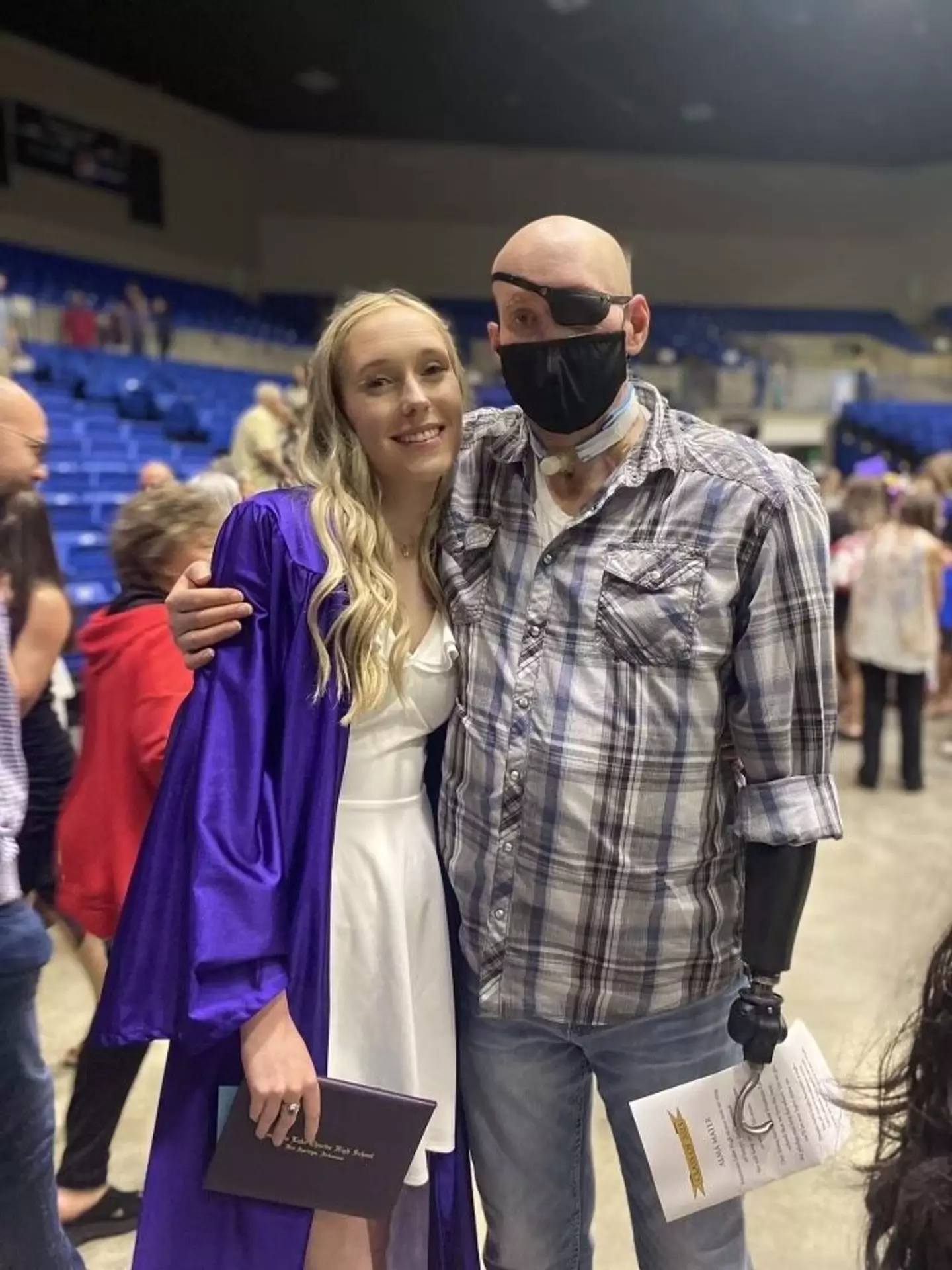
The James family/NYU Langone Health
It’s not currently known if James will regain sight, but the surgeons said in a release yesterday (9 November) that the transplanted eye has ‘shown remarkable signs of health’.
“Aaron has been extremely motivated to regain the function and independence he lost after his injury. We couldn’t have asked for a more perfect patient,” said Dr Eduardo Rodriguez, one of the leading surgeons on the case.
“The mere fact that we’ve accomplished the first successful whole-eye transplant with a face is a tremendous feat many have long thought was not possible.
“We’ve made one major step forward and have paved the way for the next chapter to restore vision.”
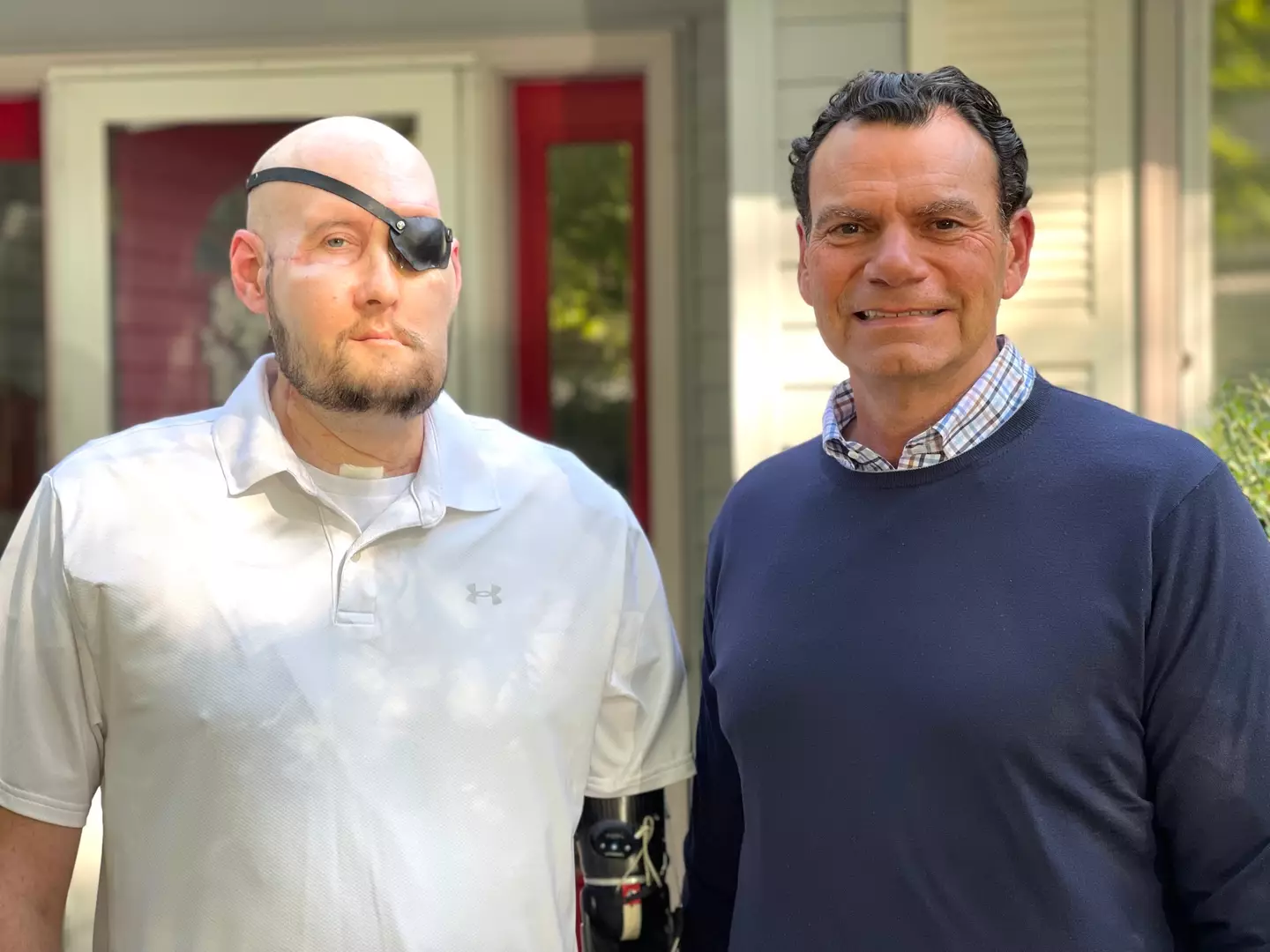
Ross Geltman/NYU Langone Health
James lost a lot of independence after the accident, struggling with food and eventually having his eye removed due to severe pain.
After being discharged from the surgery – which used 3D-printing for the face – he continued rehabilitation including physical, occupational and speech therapy.
“I’m grateful beyond words for the donor and his family, who have given me a second chance at life during their own time of great difficulty. I hope the family finds solace in knowing that part of the donor lives on with me.
“I will also forever be thankful to Dr Rodriguez and his team for changing my life. My family and I wouldn’t have been able to navigate this difficult journey without their expertise and support.”
Matt Barr sent the world’s media into a frenzy when he appeared on an episode of This Morning in April this year, when he revealed that he had Britain’s biggest (confirmed) penis.
But now, a few months after that initial interview, Matt has spoken about the uproar from the public following the interview, his experiences while being well-endowed, and how having may not be as rosy as you’d think.
Though a previous study had his todger measured at 12 inches (31 cm), the latest scientific study that the Brit took part in revealed that it’s actually 14.2 inches (36cm) – so it’s bigger than initially thought as well, while not being the biggest medically proven d**k in the UK, but the whole world.
Matt sat down for an interview with LADbible this week as an ambassador of male sex toy company Fleshy, spreading the message that bigger is not always better.
He spoke about his life experiences with his condition, speaking about what he has done to combat it, how his health is impacted by it, the weirdness of his DMs after his initial interview and more.
Luckily, not many people at work have brought the interview up to him, and when they have, he’s dealt with it as professionally as you can, while those in his family were already aware of his condition.
In a series of interviews and explanations about his package, Matt has been trying to spread the message that bigger is not necessarily better, while explaining the effects of having it on his physical and mental health.
The deeper issues with his penis will be explored in his upcoming book release, titled ‘A Long Story: Life With One Of The World’s Largest Penises’, though it’s not all negative, as Matt expanded on the amount of attention he’s had in the DMs following his virality.
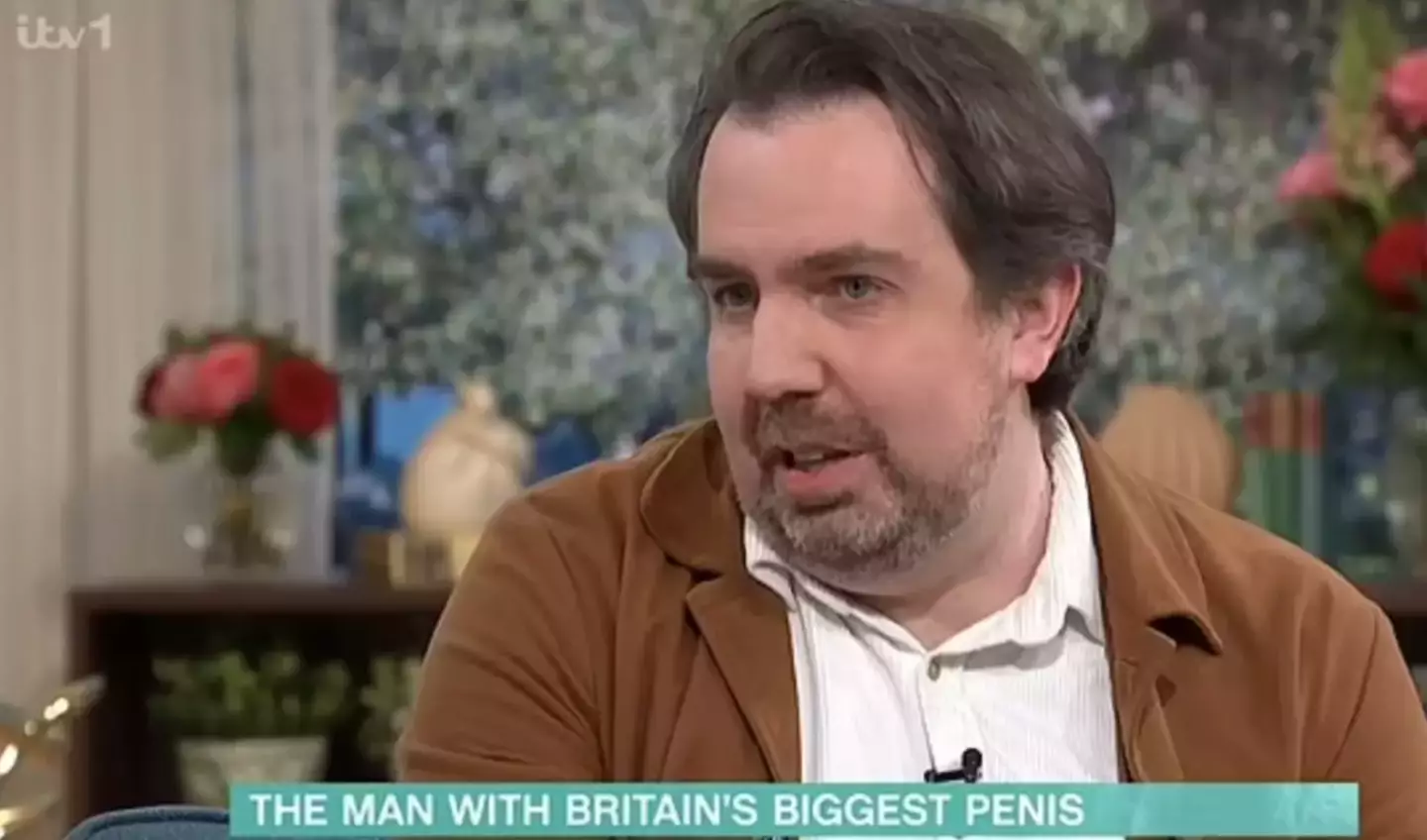
Matt has spoken to LADbible more about his experiences with a large penis. (ITV)
Speaking about some of the DMs he’s received in the past few months, he recalled: “I have had people ask me to come around and clean their house naked or something, most of stuff is too explicit to print…
“Some of them have been good, like I had some dates as a result of it as well. So I’m not claiming it was all bad,” he admitted, while also adding that he’s had the expected video requests from certain people asking him to do certain sexual things, which he has continuously denied.
However, he highlighted the most bizarre request that stand out from the lot: “There was a guy who wanted to draw me in cartoon form as a giant and do all this sex giant sex stuff, apparently, the fetish is called macrophilia.”
But while many would have flocked to OnlyFans to benefit from this newfound fame, Matt said that he has no desire to do it as a man in his 40s, though it might have been different if he was part of a different generation.
“I’m sure, if I was 20 years younger, I would have, [because] I’d be more focused on making sure my parents were all good, I’d be in the gym constantly, all these things. But that wasn’t the case back then [when he was growing up].”
Matt also spoke about the hate he has got on social media and how unexpected it was, as well as the number of people that don’t understand that problems rise from having a huge penis.

Matt has managed to get some dates off the back of his interview. (ITV)
When asked if he thinks that the general public have changed their opinions on packing downstairs, he answered: “[They’ve] not, it has reduced some of those to an idealisation… there are people who use it as a status symbol, I think, regardless, going forward, as opposed to understanding the problems,” referring to the idea of big penises being something that most men desire, while most people expect only ‘studs’ to have a schlong, while Matt says that he himself is not one.
To highlight this point further, Matt opened up about some health issues that he faces with his 14-incher: “Macrophallus is a term that gets thrown around,” which is a rare condition that causes an abnormally large penis.
He added: “It’s tossed around a lot, but it’s really more of a categorisation term. It’s not like a medical diagnosis or medical condition.”
Essentially though, Matt revealed that getting erect can sometimes cause him to feel unwell, explaining: “It just means there’s a lot of issues with blood flow. That’s partly why my size kind of fluctuates a bit as well, because it’s very difficult to have that much blood flowing around there,
“So I’ve got lightheaded at times as well, getting erections and things like that, and you can’t get fully erect… I’ve taken some various medication over time to try and to try and shrink it, which seemed to have had more like the opposite effect,” the Cambridge-graduate said.

